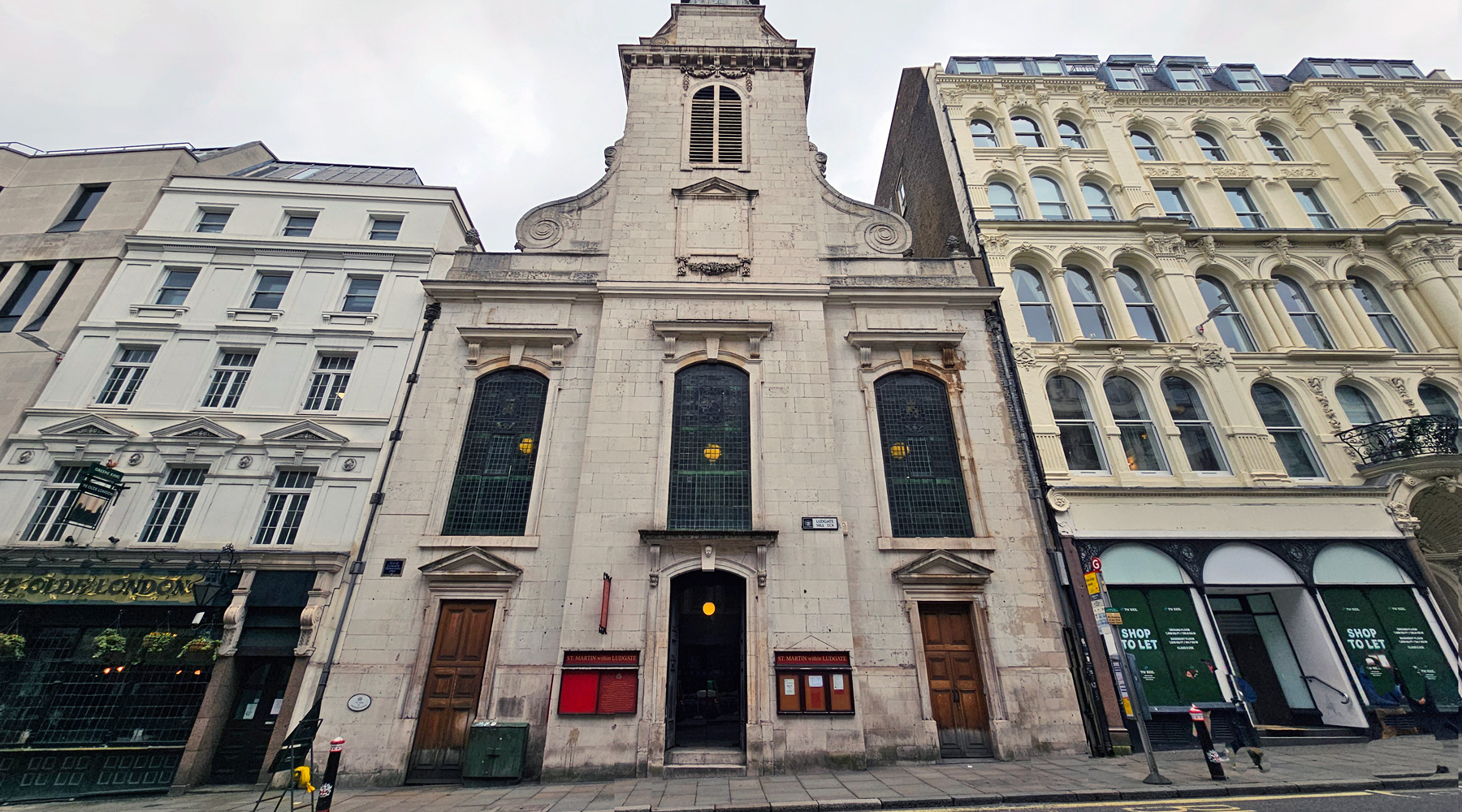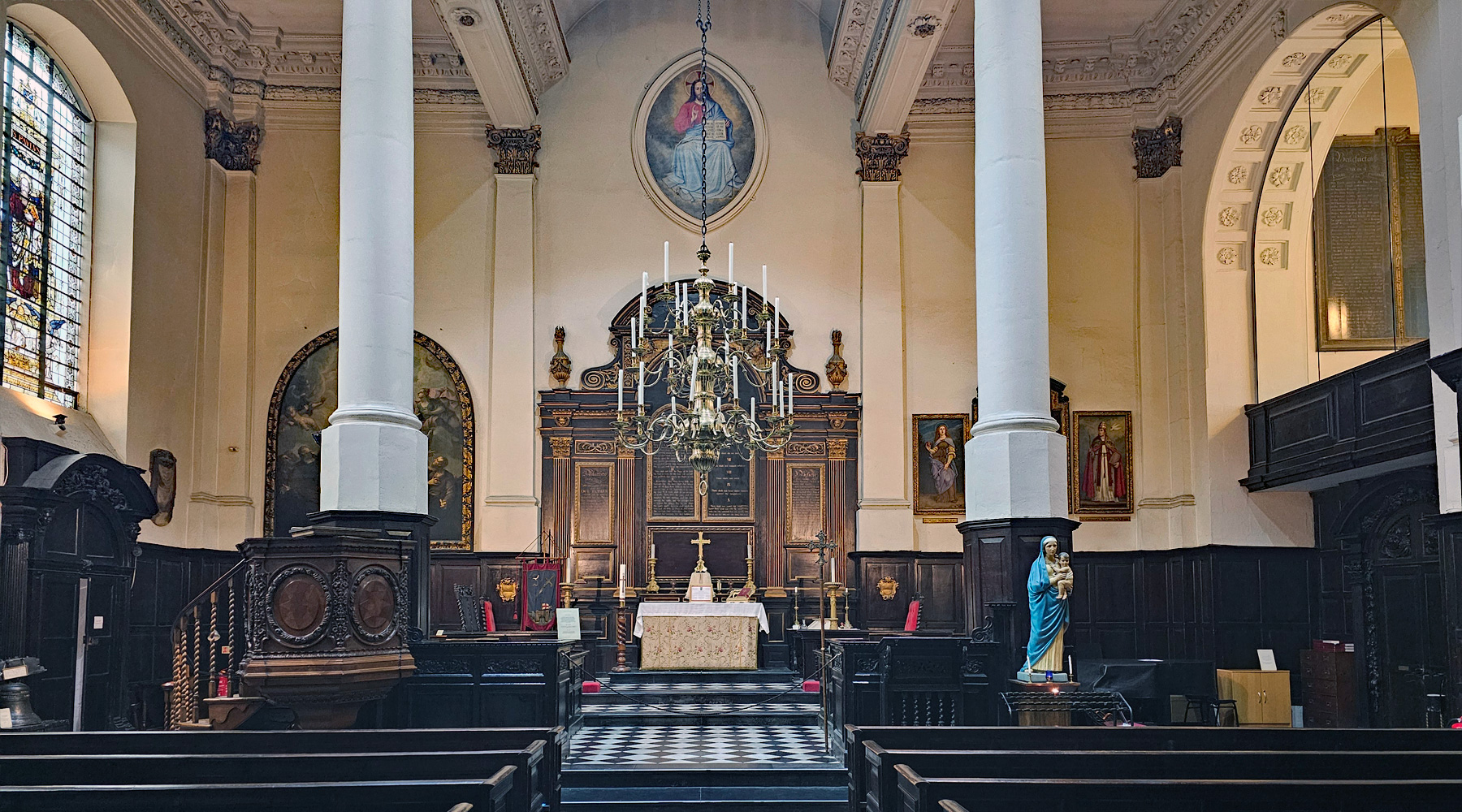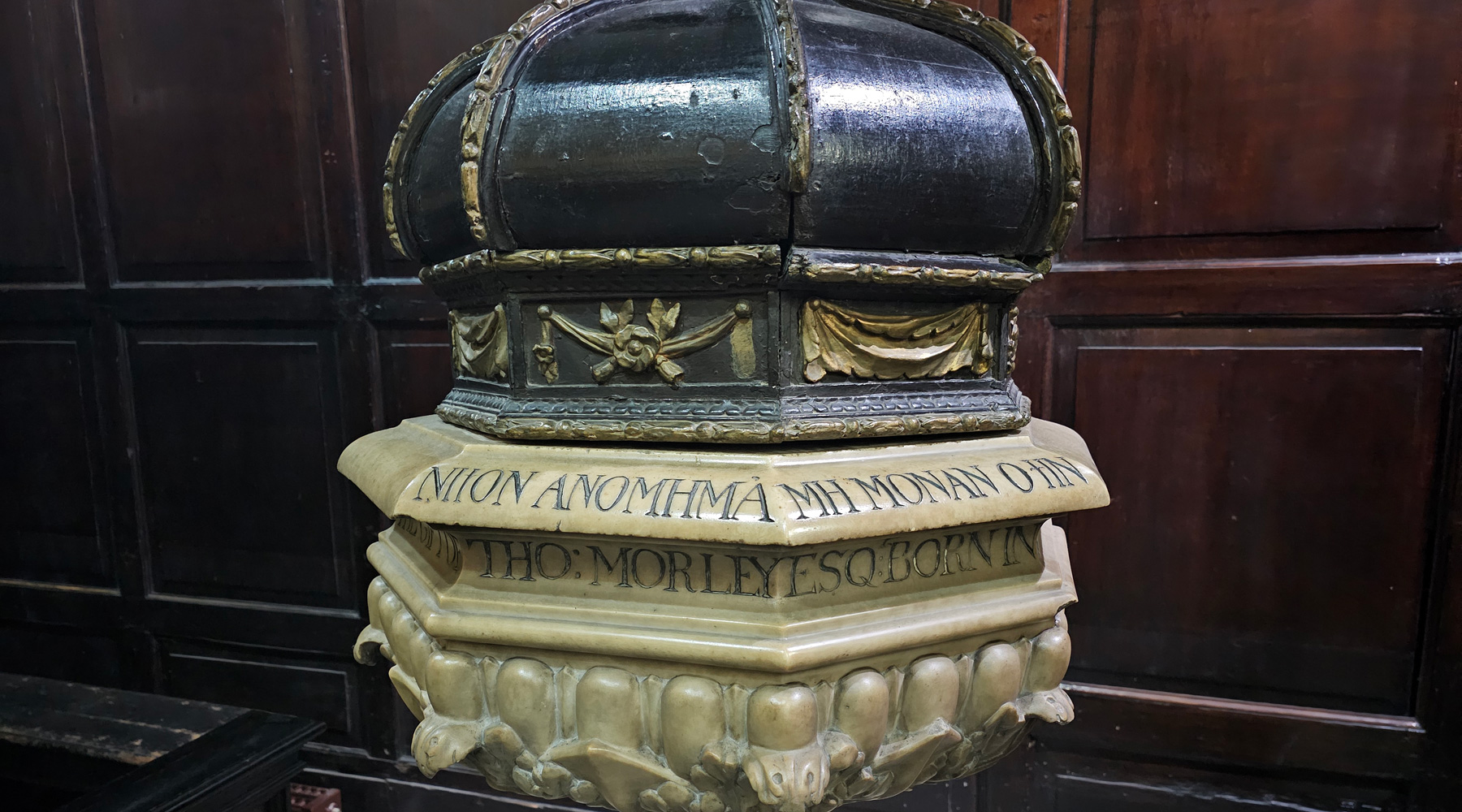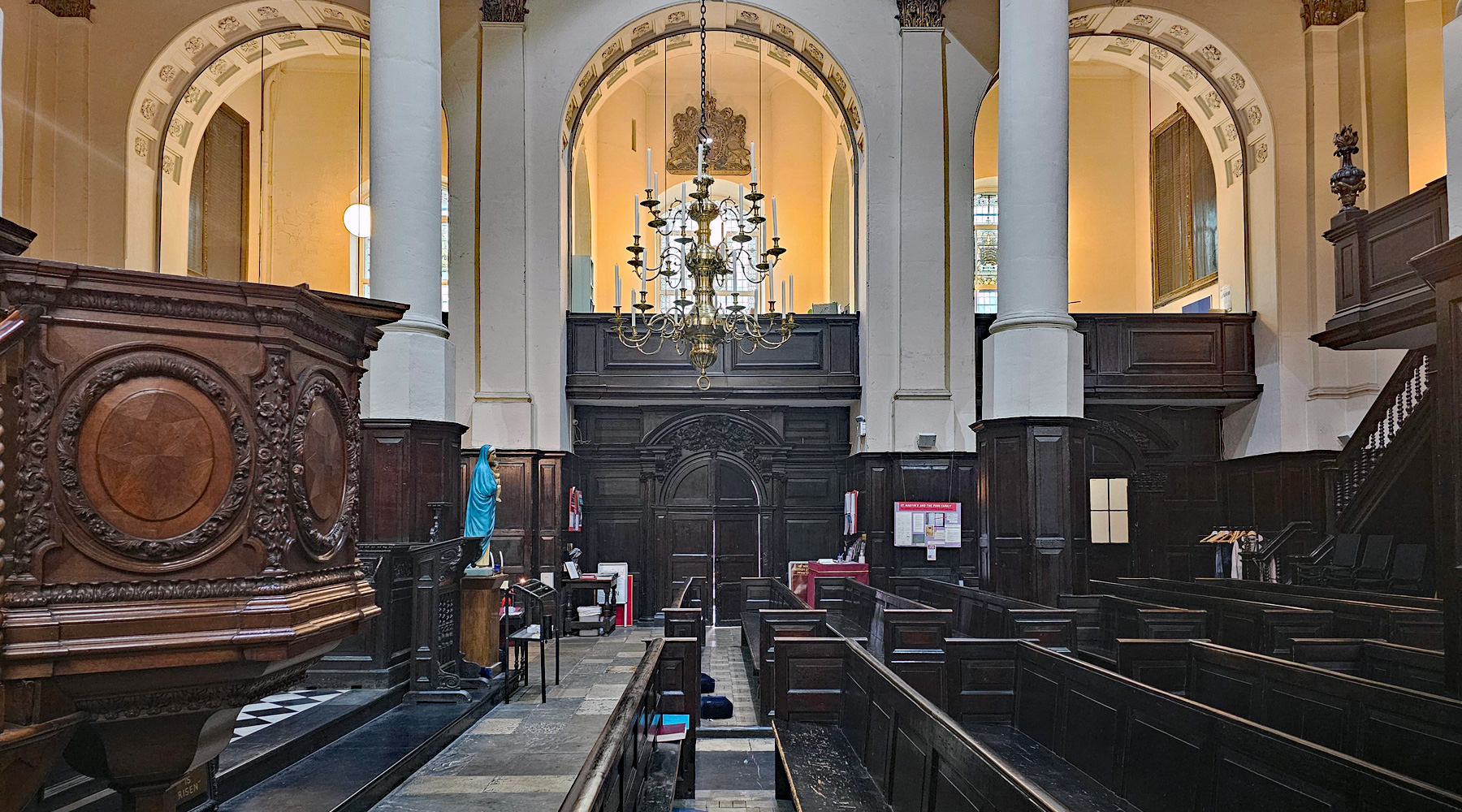This is an unusually designed church close to St Paul’s Cathedral, which has probably existed for around 900 years, although naturally, the current building is much younger.
It’s claimed, dubiously, to be where legendary King Cadwallo was buried in 677, although he was likely furious about this, as he would have still been alive at the time. He didn’t die for another five years.
In fact, the earliest known reference to a church here is much later, dating to around 1174, and the church was said to have been rebuilt in 1437. despite its location next to St Paul’s, it was actually under the control of Westminster Abbey. Rebuilt in 1623, the Great Fire of London badly damaged it, and what we see today is largely the church that was rebuilt afterwards.
While the church was waiting to be rebuilt, the road outside was widened by the City of London, so the church lost a slice off the front, which is why it now has a rather odd flat looking appearance, almost as if you’re only looking at the edge of the church.
In fact, the front is a side porch with the central door leading into a space underneath the tower and then another set of doors into the unusually square-shaped church behind.
The church isn’t that amazing architecturally, but it does contain some very interesting objects.
At the rear is a notable font, thanks to the words carved onto it, which is a bit of a joke – it’s a Greek palindrome – ΝΙΨΟΝ ΑΝΟΜΗΜΑΤΑ ΜΗ ΜΟΝΑΝ ΟΨΙΝ which translates roughly as “Wash the sins, not only the face” and is a popular saying on mainland Europe, although there are a few examples in the UK.
The grand-looking chandelier was reputedly “liberated” from St George’s Cathedral in the West Indies following a hurricane and somehow ended up being shipped to the UK, where it was donated to this church.
There’s also a possibly unique item in the church, although you need to strain to see it as it’s right next to the roped-off altar — a double churchwarden’s chair – and thought to be the only double chair known to exist. There’s also a carving in the church said to be by Grinling Gibbons, with the oft-repeated myth that an open peapod in the design means that he was paid upfront for the work.
You can’t see here, though, a Roman tombstone dedicated to Vivius Marcianus. It was discovered during the rebuilding after the fire, later donated to the Ashmolean Museum in Oxford, and given to the Museum of London in 1976.
The name of St Martin Within Ludgate comes from its location next to the Roman wall and the gate in it. St Martin was one of the patron saints of travellers. It was commonplace to have churches devoted to St Martin near city walls, where people could pray for a good journey or pay penance for a bad one.
It’s not the church of St Martins from the famous song, which includes the line “I owe you three farthings, say the bells of St Martin,” as that is a now-demolished church on Cannon Street.
The declining local population saw it lose its local parish in 1954 and converted into a Guild Church to look after the affairs of local workers. It’s also the chapel of the Honourable Society of the Knights of the Round Table, a charity founded in 1730 following the closure of the theatres as a social and dining fellowship for London literary, artistic and scientific gentlemen.
Although it no longer has a parish, it’s the community church for London’s Chinese population, so passing by on a Sunday morning can mean you’ll hear the Chinese language drifting out of the church doors.
For curious visitors, the church is usually open from 11am to 3pm during the week.











An unusual but lovely church.
When I went on a tour of Stationers’ Hall, we started with a short guided tour of the church – well worth it.